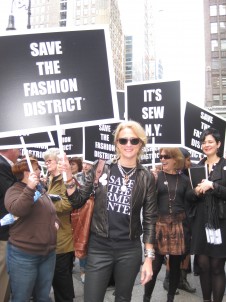After 12 years under the billionaire mayor Bloomberg (4 more than was
legal), the city has undergone massive, catastrophic change. In his
drive to create a "luxury city" built exclusively for the wealthy,
Bloomberg rezoned nearly 40% of the city's land mass, and much of
that was up-zoning--knocking down old buildings, evicting residents and
businesses, using eminent domain to steal people's property, so the
real-estate developers could erect towers of glass loaded with amenities
for the super rich.
Under Bloomberg, we watched our small mom-and-pop businesses struggle and die, while national and global chain stores proliferated exponentially
like bedbugs. Many of those small businesses had been in the city for
decades, run by third- and fourth-generation families. If you tally up
all that history, well over 6,000 years of independent business were lost during the Bloomberg era.
Rents and home prices skyrocketed as neighborhoods were
gentrified, and then hyper-gentrified. In Harlem alone, prices went up
222 percent between 2000 and 2012. The cultural heart of the city has
atrophied, as artists can no longer afford to live here. The rich got
richer and the poor got poorer, as the city's inequality gap is now on
par with parts of sub-Saharan Africa.
Vital parts of the city had their souls ripped out. Coney Island
was leveled and is becoming a suburban shopping mall. Times Square was
turned into a suburban shopping mall. Bleecker Street was turned into an
upscale suburban shopping mall. I could go on...
We desperately need the anti-Bloomberg. That is why I am endorsing Bill de Blasio for Mayor of New York City. With a focus on repairing inequality, he's the only candidate who's saying "We need a real break from the Bloomberg years." The rich are afraid of him.
He wants to tax the wealthy and "Take money away from big company
subsidies," turning it into loans and tax incentives for small
businesses. He wants to save our hospitals and create affordable
housing. He was the only candidate in last night's debate to say that
the real-estate industry is a problem for the city. As he said, "this
city has been available to everyone, it's been open to everyone, anyone
could make it here. That is now slipping away."
We need a mayor who will stop the bleeding. Bill de Blasio is not
perfect, but I believe he's our best choice for the next mayor of New
York City, and he's getting my vote. (Also, I'd like to stop writing
this blog and if Quinn wins, the vanishings are sure to continue.)
[The above blogpost originally appeared on the Blogsite, "Jeremiah's Vanishing New York" found at
http://vanishingnewyork.blogspot.com/2013/08/de-blasio-for-new-york.html . We repost it verbatim because it succinctly makes the case FOR deBlasio....and against Quinn]
.
Young Republican
-
*Young Republican*
by *Randall Mann*
September, 1984.
The heat was like a ray-gun.
The Communists had much to fear:
His name was Ronald Reagan—
and so was...
4 hours ago










































